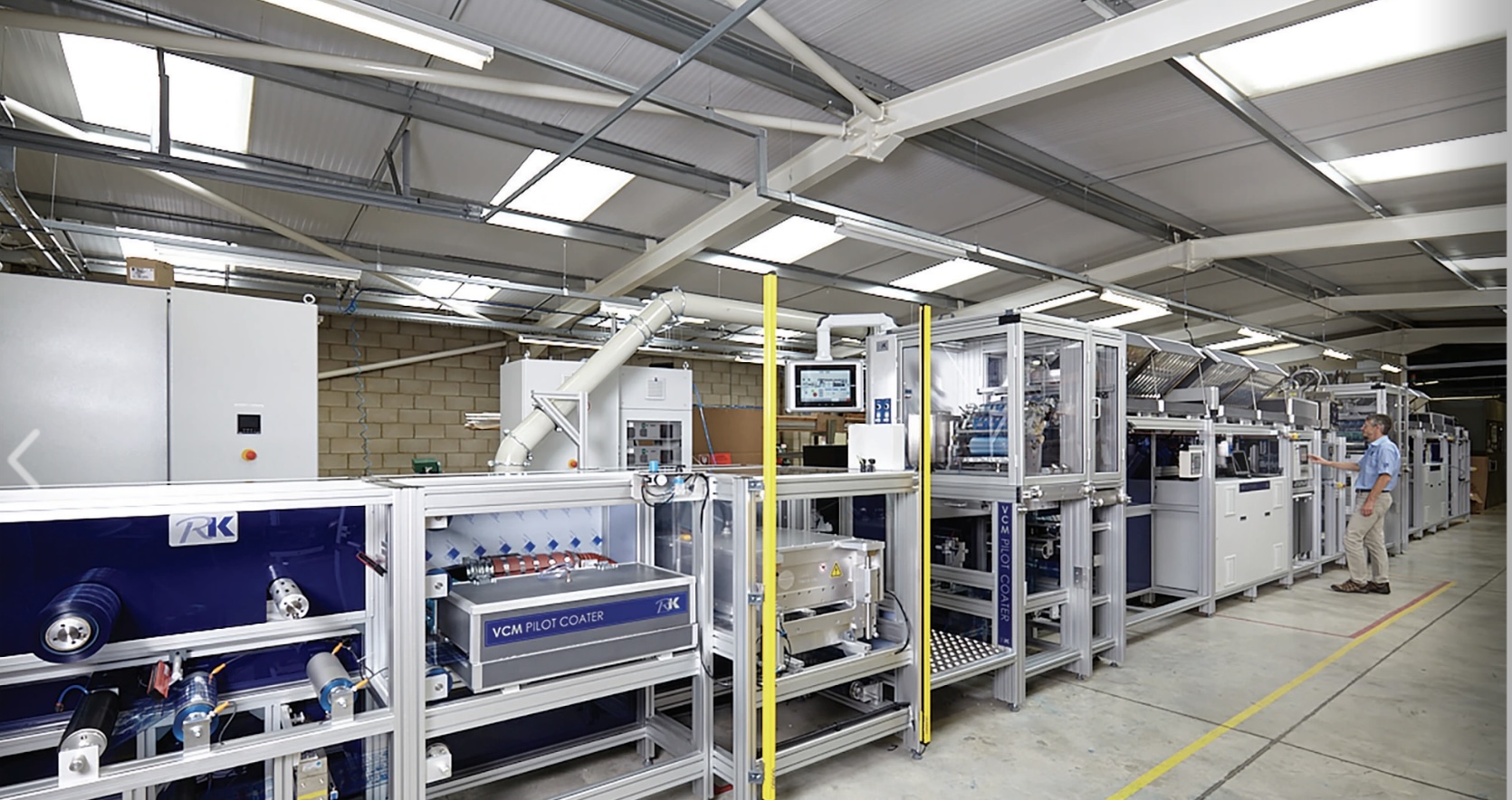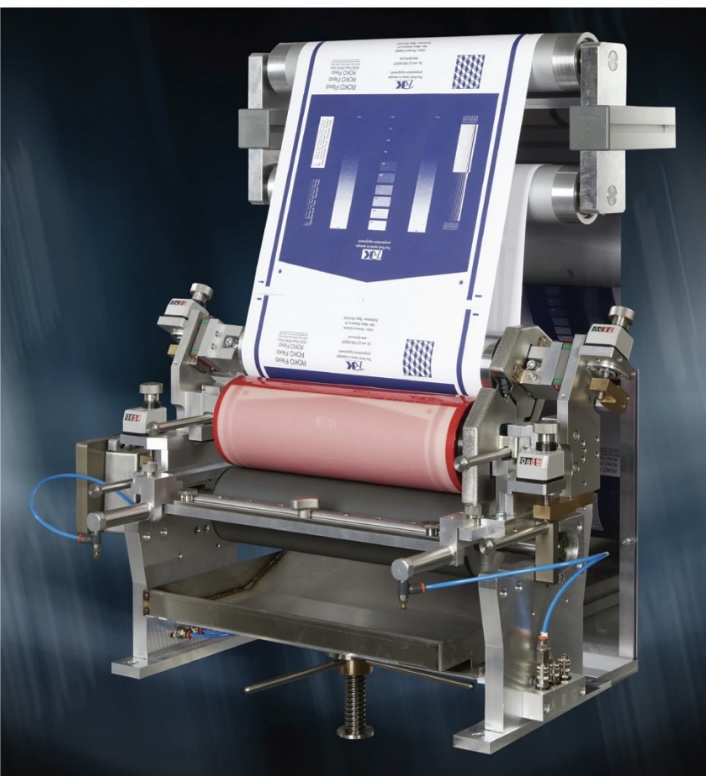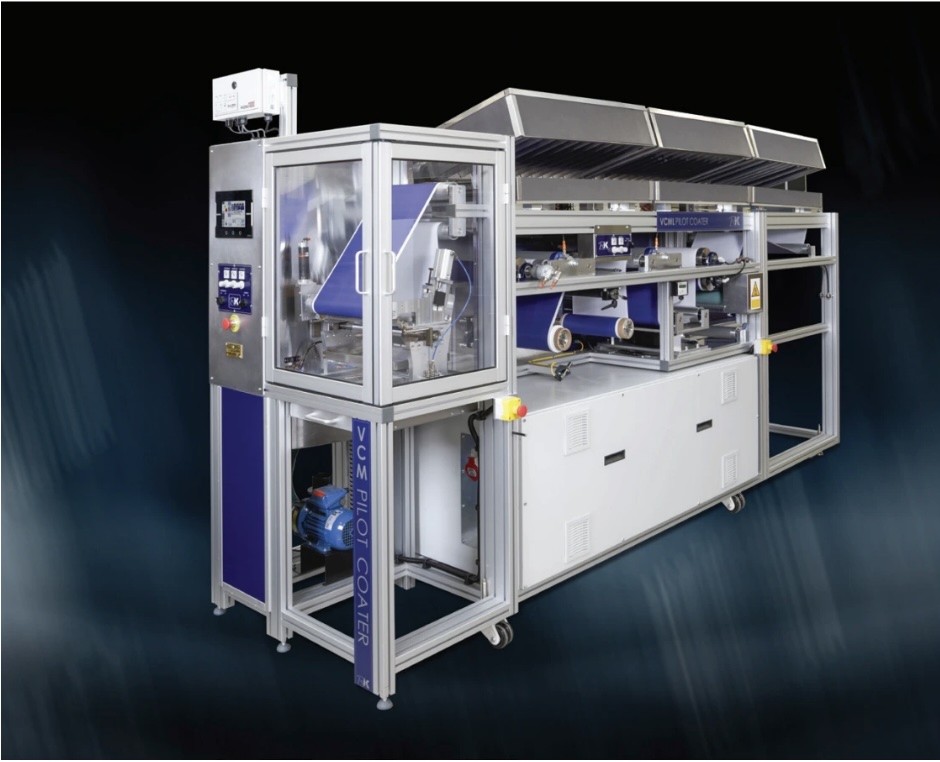Methods to Precisely Measure Tension and Web Control
- Published: June 16, 2025
How to Control Automatically Within Set Parameters
By Tom Kerchiss, Chairman, RK Print Coat Instruments Ltd.
It is not so many years back that those responsible for operating web-based converting machines were artisans rather than machine operators or minders. Quality of output was highly dependent upon the operators' skill in controlling process variables.
One particular area of intervention was web handling and particularly the control of tension, which required 100 percent operator involvement. The operator would tap on the web and by feel would determine the amount of tension required in the relevant zone. If tension needed to be adjusted the operator would manually adjust brake torque, dancer roll, gear ratios or motor speed. Everything relied on the skill of the operator developed over a lengthy period of time through trial and error.
Problems associated with this method included the fact that different operators' could have different opinions as to what felt to be the appropriate tension for the application and of course product quality could be inconsistent. There could be high levels of waste and corrective action could take time. Obviously there was no way of measuring or recording tension.
Today, in an age of thinner and more extensible substrates, after various value-added processes such as printing, coating, laminating, slitting and rewinding have taken place, the converter cannot afford for their efforts to have been wasted. The paper, film, foil or specialty structure has become too much of a valuable asset. The manual method of control is unacceptable; the converter requires a method whereby tension and web control can be measured precisely and then automatically controlled within set parameters.
Real-world realities mean that converters have to run a wide range of feed stocks, including those that are beginning to become more prevalent, the bio-based, bio-compostable and mono materials. Materials viewed as an alternative to fossil fuel derivatives and which are often ultra-thin can be difficult.
Material inconsistencies such as calliper variation or machine rollers that become misaligned can increase the risk of wrinkling and coating voids. Thinner webs tend to be less uniform than thicker grades and are affected to a greater extent by heat, moisture and solvents, thereby increasing the risk of down-the-line issues, particularly when coating, laminating, and drying or curing.
Load cells (closed loop), dancer controllers, pneumatic brakes, servo drives and ultra-sonic controllers together with communication software are available, enabling designers and manufacturers of pilot/production coating systems to design and provide converters with appropriate web handling and other system components.

Thinner webs present challenges for drive systems and other devices associated with web handling. Tension ranges and tolerances may be tighter which in turn makes inconsistencies more noticeable. The result of running a thin web with an ultra-thin layer of coating without taking into account factors such as tension regulation or the characteristics of the substrate can be disastrous.
If the web has a tendency to be delicate there is a very real risk of web breaks. It is worth noting also that areas of relatively high calliper not only have a detrimental affect on nip pressure, diametrical variation may force a web to steer out of true. The seemingly smooth nature of a filmic surface can further complicate matters in that it increases the incidence of surface scratches and abrasions.
The thickness and stiffness of a substrate surface is one of the processing conditions that can have an impact on coating quality and product performance. Substrates may exhibit the same degree of thickness but extensibility and stiffness may vary greatly.
Thicker substrates will not flex as easily as thinner substrates.
Webs can seem willful at times and must be handled respectfully. On a flexographic press engaged in running unsupported film, for example, tension inconsistencies not only lead to variation in registration, but also in repeat length. With an extensible substrate printed under tension there is a tendency towards snap-back and unless compensated for the repeat length will be shortened. In the case of more rigid and stiffer materials the reverse can occur and repeat length will become greater if a roll is wound too tightly.
Rolls that are wound up too tightly will exaggerate any web defect, particularly as webs typically have almost imperceptible high and low areas in the cross machine profile. If the web is wound too hard, the web will stretch over these ridges and will cause deformation in these areas. This will produce a baggy effect and when the roll is wound too loosely it will go out of round while winding or when it is being handled or stored.
The roundness of rolls is important. When unwinding out-of-round rolls each revolution will produce alternate tight and slack tension waves. The resulting tension variations will distort the web and cause registration problems when the time comes to print or otherwise add value.
As a roll winds tension builds up inside the roll (in-wound tension) and if the stress becomes greater as the roll builds then the inner wraps, those nearest the core, will loosen. This is what causes the roll to dish while winding or telescoping when they are being handled or unwound. To prevent this the roll should be wound tighter at the core and then wound with less tightness as the roll builds in diameter. The larger the finished reel diameter, the more critical the roll hardness profile becomes.
In conclusion, much has changed. Converters and others charged with processing retail-ready packaging and other manufactured goods are under pressure to print, coat and laminate to tight tolerances and at high speeds; waste is an anathema.
Today, converters have to run a wide range of feedstock materials, some of which they will increasingly find that they are unfamiliar with as alternative polymeric and bio-based materials become more prevalent. Controlling the web, controlling tension and making better use of automation, servo drive and complimentary technology - often using custom configured systems — point the way forward.

About the Author
Tom Kerchiss is the chairman of sample preparation system and print/coat/laminating technology specialist RK PrintCoat Instruments Ltd. The company, which won an Innovator in Pre-Press Award for the FlexiProof 100, supplies printing ink manufacturers, both large and small, as well as printers, converters and other businesses with color communication devices for all of the major print disciplines.










